
Duck Eye Facts: How Ducks See the World Differently
When it comes to fascinating anatomy, few features are as impressive as a duck’s eyes. With nearly 360-degree vision, the ability to see in ultraviolet, and built-in “goggles” for underwater clarity, duck eyes are perfectly adapted for life on land, in water, and even in the air. In this post, we’ll explore essential duck eye facts every duck keeper should know—from eye structure and color perception to night vision and common eye health concerns. Whether you’re a new duck parent or a seasoned flock keeper, understanding how ducks see the world can help you provide better care and a safer, more enriching environment.
Ducks of Providence is free, thanks to reader support! Ads and affiliate links help us cover costs—if you shop through our links, we may earn a small commission at no extra cost to you. Thanks for helping keep our content free and our ducks happy! 🦆 Learn more
Duck Eye Anatomy: Form Meets Function
When it comes to anatomy, a duck’s eye is a marvel of natural engineering. These highly specialized organs are built to help ducks thrive in complex and ever-changing environments—whether they’re dabbling on the water’s surface, foraging on land, or flying across long distances.
Eye Placement and Shape
Ducks have laterally placed eyes—on the sides of their heads—which gives them a nearly panoramic view of their surroundings. This is a survival trait common in prey animals, allowing them to detect movement and spot potential predators from almost any direction. The shape of the eye is also slightly flattened, which helps improve their field of vision above and below the waterline simultaneously.
Large Eyes Relative to Head Size
A duck’s eye is quite large in proportion to its skull. This relative size allows for more photoreceptor cells in the retina, which improves visual acuity (sharpness) and makes it easier to detect subtle motion, even at a distance.
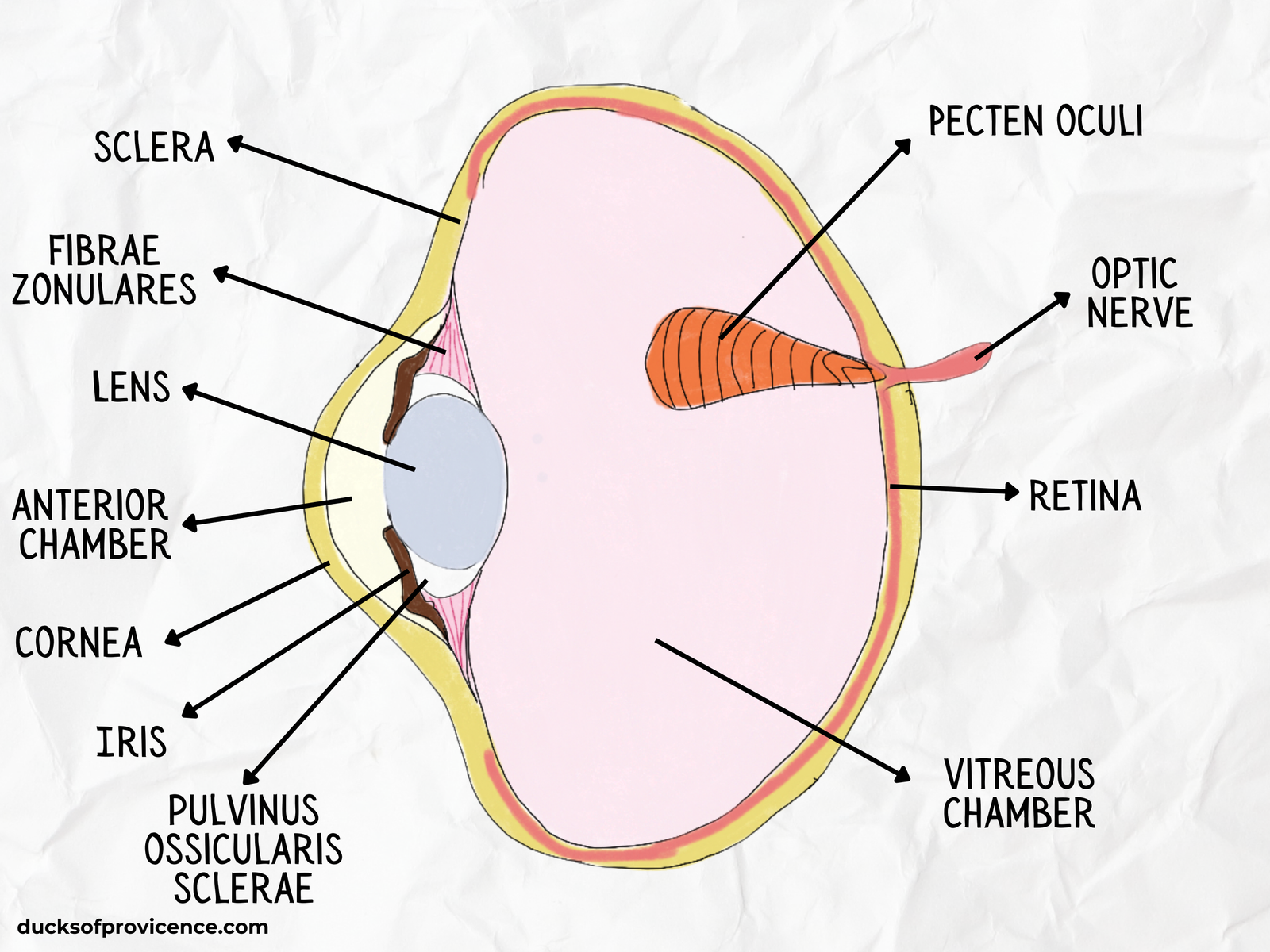
Specialized Retina Structure
Ducks, like many birds, have a retina that’s rich in both rods and cones:
- Rods are responsible for vision in dim light, which allows ducks to forage effectively at dawn, dusk, or even at night.
- Cones provide sharp vision and color perception, and ducks actually have four types (compared to our three), enabling them to see in ultraviolet.
Another unique structure in the avian retina is the pecten oculi—a comb-like, vascularized structure that’s thought to nourish the retina and may even play a role in regulating intraocular pressure. It’s not found in mammals and remains one of the bird eye’s most intriguing features.
Nictitating Membrane: Nature’s Goggles
Perhaps the most remarkable feature of duck eye anatomy is the nictitating membrane—a translucent third eyelid that sweeps horizontally across the eye. This membrane:
- Protects the eye from debris, dust, and water
- Keeps the surface of the eye moist
- Allows ducks to see while diving or swimming underwater
Think of it as built-in swim goggles, helping ducks hunt or explore in murky water without sacrificing visibility.
Lens Flexibility and Focus Control
Ducks also have an impressive ability to adjust the shape of their lenses. This rapid accommodation allows them to shift focus between near and far objects—an essential skill when flying at high speeds, watching for threats, or zeroing in on food beneath the water’s surface.
In sum, duck eyes are perfectly adapted to the challenges of their environment. Whether above ground or underwater, during daylight or near-total darkness, their eyes serve as a powerful tool for survival, navigation, and social interaction.
Field of Vision: A Nearly 360-Degree Advantage
One of the most fascinating features of duck vision is just how much of the world they can see at once. Because of the lateral placement of their eyes—on the sides of their heads—ducks have a nearly panoramic field of view. This setup is especially advantageous for detecting predators, navigating crowded ponds, and keeping an eye on the rest of the flock.
An Eye on Almost Everything
Most domestic ducks have a visual field of approximately 340 degrees. That means they can see in front, to the sides, and almost all the way behind them—leaving only a small blind spot directly to the rear and a narrow one in front of their bill. This makes it very difficult to sneak up on a duck, even if they seem distracted!

Monocular vs. Binocular Vision
Much of a duck’s field of view is monocular, meaning each eye operates independently and sees a different image. This gives ducks excellent peripheral vision but does reduce their depth perception in those areas.
To gain binocular vision—where both eyes focus on the same object, allowing for better depth perception—ducks must turn their heads to bring an object into their narrow binocular zone, which is located directly in front of the bill. This behavior is especially noticeable when ducks are:
- Inspecting unfamiliar objects
- Trying to grab food with precision
- Watching an approaching human or animal with curiosity
So, if you’ve ever seen your duck tilt its head or give you a long sideways stare, it’s not being shy—it’s just adjusting its field of vision to see you more clearly!
Why This Matters for Safety and Enrichment
Understanding a duck’s field of vision helps us make better decisions as duck keepers. For example:
- Approaching ducks from the front and slightly to the side is less startling than from behind.
- Enrichment items, food bowls, or new toys are more likely to be investigated if placed in a duck’s direct or side view.
- Predators approaching from the rear may still go unnoticed, so always ensure predator-proof fencing and housing that guards against rear and aerial attacks.
Bonus Insight: Vision in Flight
While domestic ducks aren’t as active in the air as wild species, many can and do fly short distances. For ducks in flight, their wide field of view allows them to spot landing zones, avoid obstacles, and stay oriented in relation to the rest of the flock. Their ability to maintain such a broad field of view while moving at high speeds is a remarkable evolutionary trait.
The Three Eyelids of Ducks: Built-In Protection and Clarity
es, you read that right—ducks have three eyelids per eye! And while it might sound strange, this unique feature plays a critical role in their everyday survival, especially as waterfowl that spend a lot of time dabbling, diving, and preening.
Let’s break down each one and what it does.
Upper Eyelid
This is the top lid, just like in humans. It moves very little and contributes minimally to blinking in ducks. In most cases, ducks rely more on the lower lid and their third eyelid to moisten and protect the eye.

Lower Eyelid
Unlike us, ducks blink upward using their lower eyelid, which is more mobile than the upper one. This blink motion helps sweep debris off the eye and spread moisture across the cornea. It’s subtle but essential—especially when ducks are in dry or dusty environments, or when preening feathers sends tiny particles flying into the air.
Nictitating Membrane: The Secret to Seeing While Swimming
The third eyelid, known as the nictitating membrane, is where things get really fascinating. This semi-transparent lid moves horizontally across the eye, from the inside corner near the beak outward. Ducks can activate this membrane voluntarily, and it acts like a built-in pair of goggles—clearing the eye while still allowing partial vision.
Key functions of the nictitating membrane include:
- Protection: Shields the eye from dust, debris, insects, and pecking during social interactions.
- Moisture: Helps keep the eye surface hydrated and clean without interrupting vision.
- Underwater vision: Essential when swimming or foraging beneath the surface—especially in diving species. It allows ducks to maintain visual clarity even in murky or fast-moving water.
For pet ducks, you might catch a quick glimpse of this membrane when they’re splashing in their water dish, shaking their heads, or dealing with wind or dust. It can sometimes appear as a gray or bluish film gliding across the eye in a blink-like motion.
When to Watch Closely
While the nictitating membrane is a normal and healthy part of duck anatomy, frequent or prolonged covering of the eye can also be a sign of irritation, infection, or trauma. If a duck consistently keeps one eye closed, or if the membrane appears inflamed or opaque, it’s best to consult an avian vet.
Fun Fact: Humans don’t have a functioning nictitating membrane—but we do have a tiny remnant of one. That small pink bump in the corner of your eye? It’s called the plica semilunaris and is a leftover from evolutionary ancestors who may have once needed an extra eyelid, too.
Adaptations for Swimming and Diving: How Duck Eyes Thrive in Water
As waterfowl, ducks are perfectly designed for life in and around water—and their eyes are no exception. Whether they’re diving beneath the surface for food or skimming across a pond, ducks rely on a suite of specialized adaptations that help them see clearly, stay protected, and react quickly.
These adaptations ensure that ducks can transition smoothly between dry land and aquatic environments, without missing a beat—or a bug, or a tadpole!
The Nictitating Membrane: Natural Underwater Goggles
We’ve already covered this incredible third eyelid in detail, but it’s worth emphasizing just how critical it is for aquatic life. When ducks dive, the nictitating membrane acts like built-in swim goggles, sliding across the eye to:
- Maintain visibility underwater
- Shield against particles, mud, and debris
- Reduce glare from the water surface
This membrane is translucent, so ducks can still navigate and search for food even while it’s deployed.
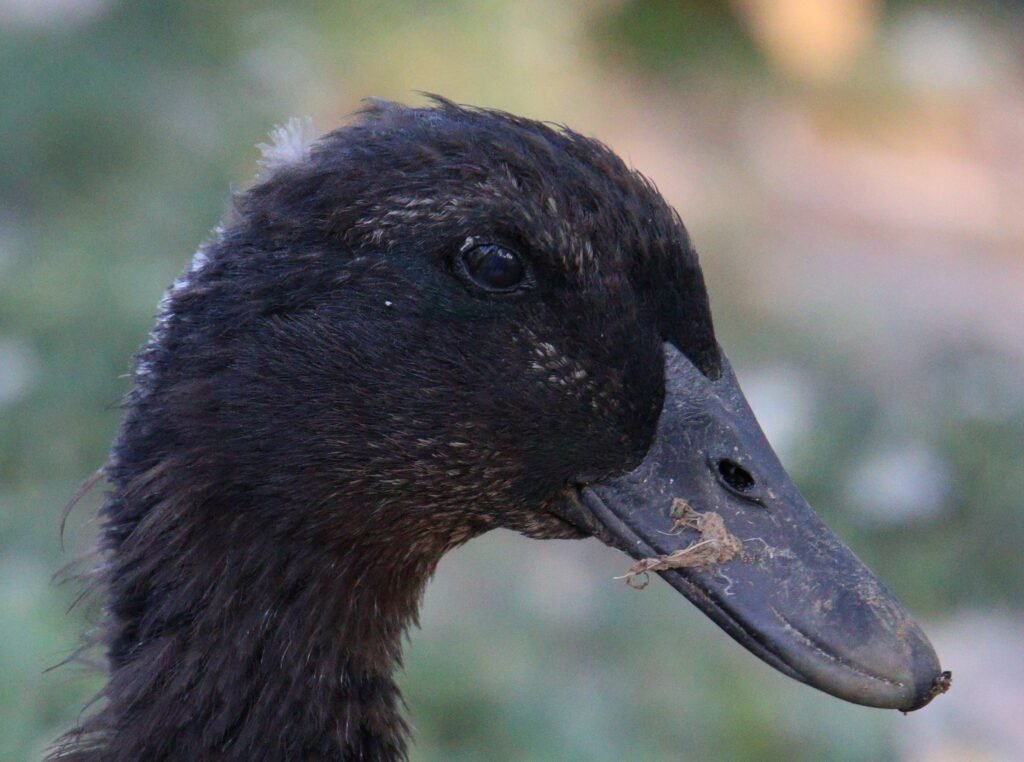
Waterproofing from Within: Tear Composition and Eye Hydration
Ducks’ eyes remain well-lubricated thanks to a special tear film that includes oils produced by their preen gland (uropygial gland). While this oil is better known for waterproofing feathers, it also helps:
- Keep the surface of the eye smooth and hydrated
- Prevent bacteria and parasites from attaching to the cornea
- Support comfort in windy or cold conditions
This tear film is especially important in fluctuating environments, such as when ducks move between dry straw bedding and a cold water source.
Visual Clarity Above and Below the Surface
Some diving species, such as sea ducks and mergansers, have even more refined adaptations, but even domestic ducks, like Pekins and Runners, benefit from this visual flexibility when dabbling or bathing.
Strategic Eye Placement
The side-facing position of a duck’s eyes doesn’t just give them panoramic land vision—it also helps when they’re floating low in the water. With much of their body submerged and only the head visible, ducks can watch for predators, flock mates, or food both above and across the surface, maximizing awareness with minimal exposure.
If you’ve ever watched a duck slowly pivot its head while floating, it’s likely scanning different zones in its field of view—almost like a rotating camera.
Unlike humans, ducks don’t suffer from significant blurriness when opening their eyes underwater. Their corneal shape and lens flexibility allow them to adjust focus quickly, so they can transition between air and water with minimal visual distortion.
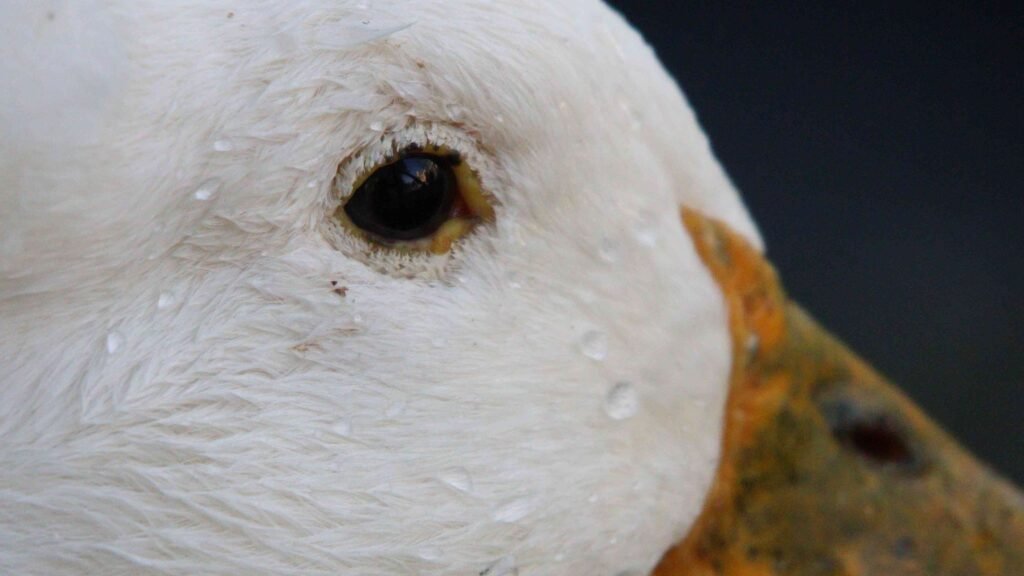
Buoyancy and Vision Go Hand-in-Hand
Maintaining proper buoyancy and body posture in the water also supports optimal vision. Ducks naturally position themselves so that the eyes remain above the surface, but their ability to dive briefly or tip forward (as in dabbling) is supported by the flexibility of the neck and the control of their body angle—allowing precise eye positioning even during active feeding.
Fun Fact: Some studies suggest that ducks can detect ripples and small waves made by insects or fish on the water surface—allowing them to use both sight and touch to locate prey.
Can Ducks See at Night?
The answer is yes—ducks can see remarkably well at night. While they aren’t fully nocturnal animals, their eyes are equipped with several adaptations that allow them to navigate, forage, and even stay safe in dim lighting. Whether it’s dusk, dawn, or a cloudy moonlit night, ducks don’t lose their sense of sight when the sun goes down.
This ability is especially important for both wild and domestic ducks, as many threats or foraging opportunities arise during low-light hours.
Rod-Rich Retinas: The Key to Night Vision
Ducks have a retina packed with rod cells, the photoreceptor type responsible for vision in low light. Rods are highly sensitive to even faint light sources, enabling ducks to:
- Detect motion and outlines in the dark
- Navigate at dawn or dusk
- Avoid predators that are most active at night
Compared to cone cells (which allow for color vision), rods don’t provide sharp images or color—but they make up for it in sensitivity. This is why your ducks can confidently waddle around the run or move toward their shelter long after the sun has set.
Nighttime Foraging
In the wild, many ducks forage at night or in the early morning. This behavior isn’t just due to visual ability—it’s also a survival strategy:
- Less competition for food from diurnal animals
- Lower risk of predation by daytime hunters
- Cooler temperatures in hot climates
Pet ducks may also engage in light nighttime activity, especially if there’s ambient light in their run or coop. If you’ve noticed your ducks rustling around or making quiet splashing noises after dark, they’re likely just comfortable in their surroundings—and able to see enough to move around safely.
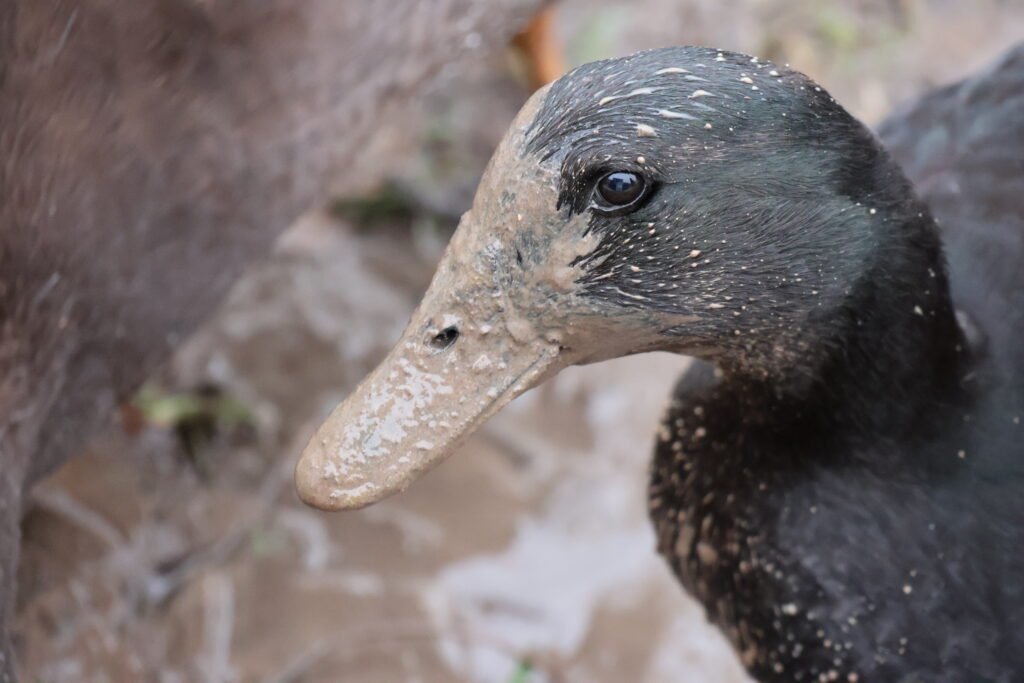
Do Ducks Need Night Lights?
In most cases, no. Healthy ducks do not need artificial lighting overnight, and in fact, providing too much light can disturb their natural circadian rhythms. However, a low-wattage light or motion-activated solar light can be helpful in certain situations:
- During predator checks or emergencies
- If you need to monitor a sick or broody duck
- To reduce stress in newly rehomed ducks
If lighting is used, make sure it’s gentle and not too bright—more of a soft glow than a spotlight. Ducks are light-sensitive and benefit from a regular day-night cycle for proper rest and egg-laying rhythms.
How Does Color Vision Work at Night?
Here’s where it gets especially interesting: ducks may retain some level of color vision in low-light conditions. While most animals lose color perception in the dark, the complex structure of the duck eye—including oil droplets in cone cells and specialized retinal wiring—may allow for limited color differentiation even at twilight.
This is still an area of active research, but it further highlights how advanced duck vision is compared to many other domesticated species.
Fun Fact: Ducks sleep with one eye open—literally. They practice unihemispheric slow-wave sleep, which means one half of their brain can rest while the other stays alert. This lets them maintain visual awareness of their environment, even while dozing. Talk about night vision multitasking!
What Colors Can Ducks See?
Ducks see the world in ways we can only imagine. While humans are trichromatic—meaning we have three types of cone cells in our eyes to detect red, green, and blue—ducks are tetrachromatic. This means they have four types of cone cells, including one that allows them to see ultraviolet (UV) light.
To put it simply: ducks can see colors we can’t even comprehend.
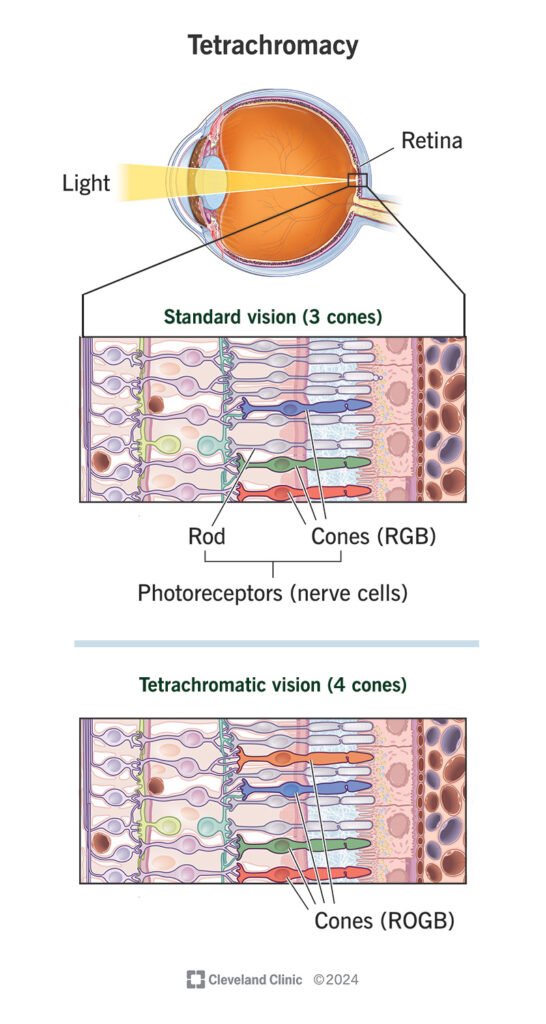
Tetrachromatic Vision: Seeing More Than the Rainbow
The presence of a fourth cone cell sensitive to UV light gives ducks access to a broader spectrum of color:
- UV perception adds a completely different dimension to how they view the world.
- They likely see subtle differences in feather iridescence, markings, and even the freshness of plants that look identical to us.
Many objects that appear dull or uniform to us may glow or reflect vividly to a duck—helping them in everything from mate selection to spotting food.
Oil Droplets: Enhancing Color Discrimination
Inside each cone cell, ducks have colored oil droplets that act as filters. These help them:
- Fine-tune their color vision
- Reduce light scatter in bright environments
- Improve contrast between similar hues
This means ducks can distinguish between shades that look almost identical to the human eye—an ability that may help them identify healthy plants, ripe fruits, or members of their flock.
Why Does UV Vision Matter?
Ultraviolet vision serves many practical purposes in a duck’s life:
- Mate selection: Some feathers reflect UV light, creating iridescent displays that are invisible to us but dazzling to ducks.
- Egg recognition: Certain eggs may reflect UV light patterns, helping ducks identify their own or avoid parasitic eggs.
- Foraging: UV light can reveal patterns on leaves or detect urine trails and water quality changes.
- Navigation: UV patterns in the sky may assist with orientation and migratory behavior in wild ducks.
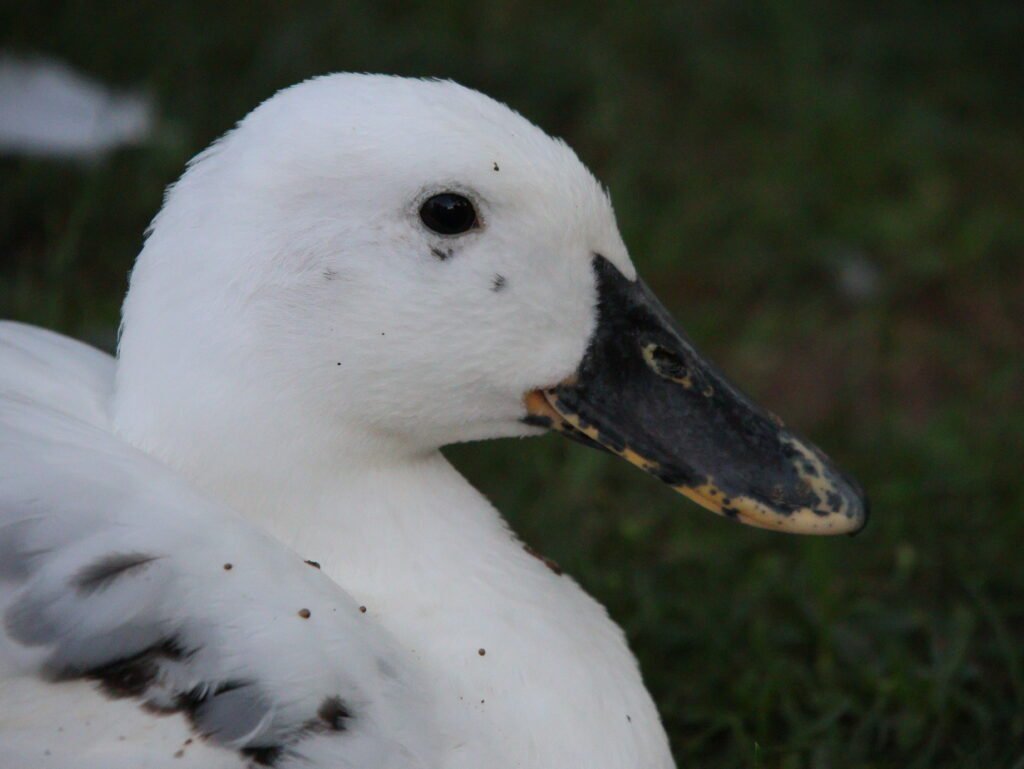
Do Domestic Ducks Still See UV Light?
Even though pet ducks don’t migrate, their wild instincts and visual tools remain intact—something to keep in mind when thinking about how they experience their surroundings.
Yes! Even domestic breeds like Pekins, Runners, and Cayugas retain these visual abilities. While we often assume their behavior is simple, ducks are constantly taking in a rich tapestry of visual information that we simply can’t access.
Some researchers suggest that UV vision may even influence how ducks react to artificial environments. For instance, UV-reflective surfaces (like certain plastics or fabrics) may look startling or overly bright to ducks, which could explain hesitation around some toys or housing materials. Our ducks, for example, hate it when we wear something red. It almost seems like it hurts their eyes.
How Can We Support Their Visual Needs?
Understanding duck color vision can help us make better choices as pet owners:
- Natural lighting: Allow for exposure to daylight when possible. Natural light supports healthy vision and hormone cycles.
- Enrichment: Brightly colored toys and foraging items may stimulate curiosity and engagement.
- Gentle indoor lighting: If your ducks spend time indoors or in a barn, opt for full-spectrum lighting when possible—but avoid intense UV lights, which may cause eye strain.
Fun Fact: Some birds that can see UV light are able to detect certain insect trails, such as urine or pollen dust, that fluoresce in UV. Ducks may use similar cues when exploring their environment.
Common Eye Problems in Ducks: What to Watch For
While duck eyes are incredibly adapted and resilient, they’re still vulnerable to injury, infection, and irritation—especially in a domestic environment where things like dust, debris, or bedding material can cause issues. As duck keepers, it’s important to recognize the signs of eye trouble early so we can help our feathered friends stay comfortable and healthy.
Here are the most common eye problems seen in pet ducks, along with how to recognize and respond to them.
Conjunctivitis (Pink Eye)
Cause: Can be triggered by bacteria, dusty bedding, ammonia buildup, or respiratory infections.
Signs:
- Redness or swelling around the eye
- Excess tearing or discharge
- Crust forming on the eyelids
- Keeping one or both eyes closed
What to do: Gently rinse the eye with a sterile saline solution. Improve ventilation and bedding hygiene. If symptoms persist, a vet may prescribe an antibiotic ointment or eye drops.
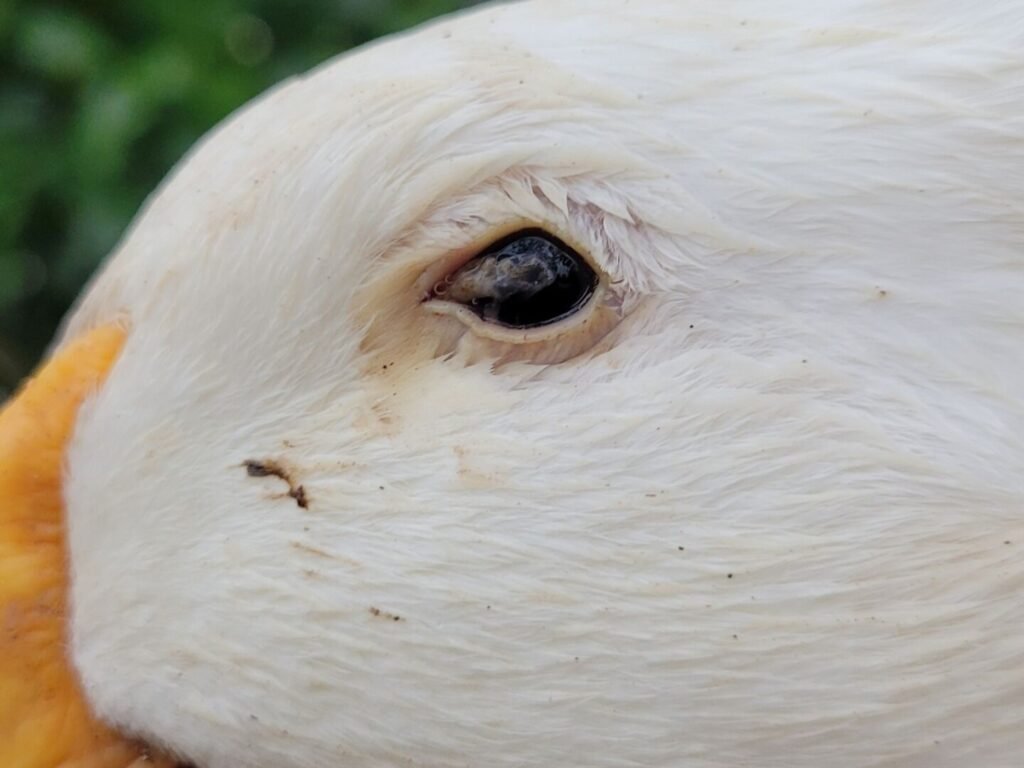
Foamy or Watery Eyes
Cause: Often a symptom of respiratory disease, such as Mycoplasma or avian influenza.
Signs:
- Frothy or bubbly discharge at the corners of the eyes
- Sneezing or nasal discharge
- Lethargy or open-mouth breathing
What to do: This is more serious and warrants veterinary care, especially if more than one duck shows symptoms. Quarantine the affected duck if possible and monitor the whole flock.
Eye Injuries
Cause: Pecking by flock mates, rough handling, scratching on sharp objects, or foreign bodies (e.g., bits of straw or seed husks).
Signs:
- Cloudiness or visible scratch on the cornea
- Sudden closing of one eye
- Excessive blinking or rubbing the face with the wing
- Sensitivity to light
What to do: Flush gently with saline. Keep the duck in a calm, clean environment and consult a vet. Avoid letting other ducks peck at the injured area—separation may be necessary during healing.
Swollen or Sealed Eyes in Ducklings
Cause: Poor brooder conditions, vitamin A deficiency, dust exposure, or early respiratory infections.
Signs:
- Puffy eyelids or sealed-shut eyes
- Difficulty finding food or water
- Poor growth if not addressed
What to do: Improve brooder ventilation, check feed for adequate vitamin A, and clean the eye with warm saline. In severe cases, antibiotics or vitamin supplements may be necessary.
Cataracts or Age-Related Cloudiness
Cause: Cataracts are most often seen in older ducks or those with nutritional imbalances over time.
Signs:
- Gradual clouding of the eye
- Reduced reaction to movement
- Bumping into objects
What to do: While not usually painful, cataracts can limit a duck’s quality of life. Ensure a safe, predictable environment and offer support with feeding and navigation.
When to Call a Vet
Always seek veterinary care if:
- There is yellow, green, or thick white discharge
- The eye is fully closed or appears swollen for more than 24 hours
- There are signs of systemic illness (lethargy, loss of appetite, labored breathing)
- More than one duck in your flock is showing symptoms
Prompt care can prevent long-term damage and stop the spread of infectious causes.
Tip from Our Flock: Keep a small bottle of sterile saline, Veterycin Eye Wash, Terramycin, and a soft, clean cloth in your duck first-aid kit. It’s a gentle way to treat eyes if you notice early signs of irritation.
Fun and Surprising Duck Eye Facts
- Mirror recognition: Some ducks can recognize themselves in mirrors, showing a surprisingly high level of visual cognition.
- Eye color: Varies by breed and age—ranging from dark brown to blue-gray, even red or orange in some cases.
- They can focus at high speed: Ducks are able to rapidly adjust the shape of their lens—a process called accommodation—to shift between near and far vision. This is especially useful during flight or when scanning for predators and food in quick succession.
- Each eye sends signals to a different side of the brain: Like many birds, ducks process visual information separately in each hemisphere of the brain. This allows them to multitask visually—such as watching for threats with one eye while foraging with the other.
- Their vision may play a role in social hierarchy: Some studies suggest that UV reflectivity in feathers, especially around the head and chest, may influence social behaviors like mate selection or flock dominance. What looks dull to us may glow with meaning to a duck.
- Ducks can navigate in fog: While their vision isn’t radar, ducks have excellent contrast sensitivity and can detect slight differences in light and shadow—even in foggy or low-contrast environments. This helps them move through misty wetlands or early morning conditions with surprising ease.
- They have a higher flicker-fusion rate than humans: This means ducks can perceive flickering light at higher frequencies than we can. A light that looks steady to us (like an old fluorescent bulb) might appear to flicker to a duck. This could impact how they experience artificial lighting.
- Ducklings develop vision early: Even before hatching, duck embryos can respond to light through the eggshell. After hatching, their visual system matures rapidly, allowing ducklings to follow their mother and recognize danger from a very young age.
- Vision helps with orientation, even in pet ducks: Though your pet ducks may not migrate, their ancestors did. Their eyes are still finely tuned to light direction and sun angle—tools wild ducks use to stay oriented during seasonal journeys.
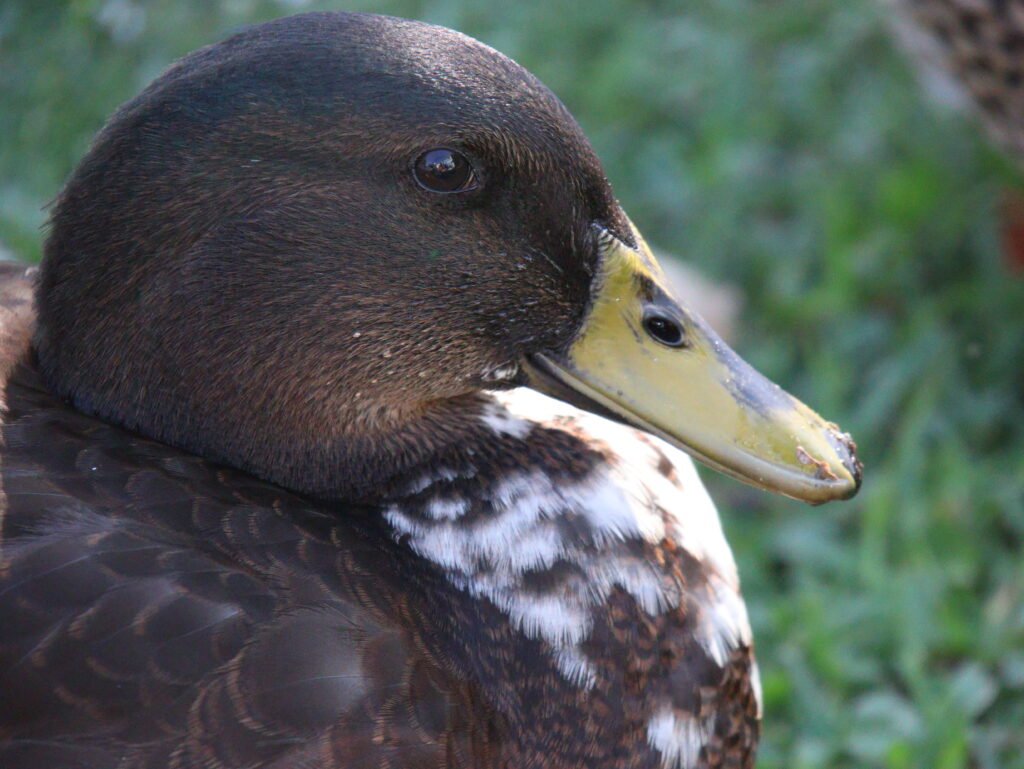
Final Thoughts: A Window Into a Duck’s World
Duck eyes are nothing short of extraordinary. From their nearly 360-degree field of view to their ability to see ultraviolet light, these adaptations reveal just how finely tuned our feathered friends are to their environment. Whether swimming underwater, spotting subtle movements across a pond, or sleeping with one eye open, ducks rely on their vision every moment of the day—and night.
Understanding how your ducks see the world helps you become a more attentive and compassionate caretaker. By knowing how their eyes function, what colors they perceive, and what kinds of issues can arise, you can better design their environment, monitor their health, and respond quickly to signs of trouble.
So next time your duck gives you that sideways glance or blinks with a translucent third eyelid, you’ll know there’s a fascinating visual system behind it—one that deserves just as much care and attention as the rest of their well-being.
Read more about Duck Eyes:
- Understanding and Managing Eye Infections in Ducks
- Duck Eye Health: Understanding Cataracts in Ducks and How to Treat Them
References:
- Histological and histochemical studies of the eye structure of Anas platyrhynchus (Mallard) duck species
- Jane, S.D., Bowmaker, J.K. Tetrachromatic colour vision in the duck (Anas platyrhynchos L.):microspectrophotometry of visual pigments and oil droplets. J. Comp. Physiol. 162, 225–235 (1988). https://doi.org/10.1007/BF00606087
- Retinal photoreceptor fine structure in the mallard duck (Anas platyrhinchos)
- The Avian Membrana Nictitans: Anatomy and Function


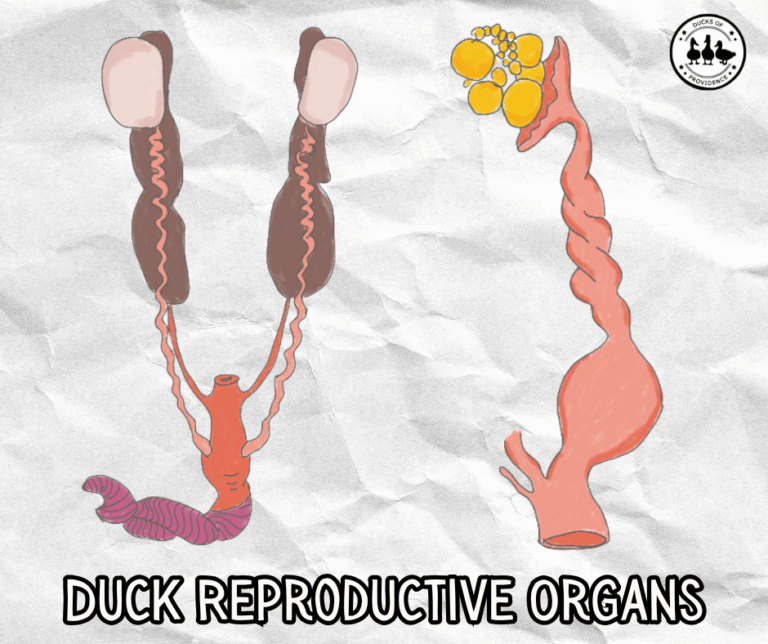
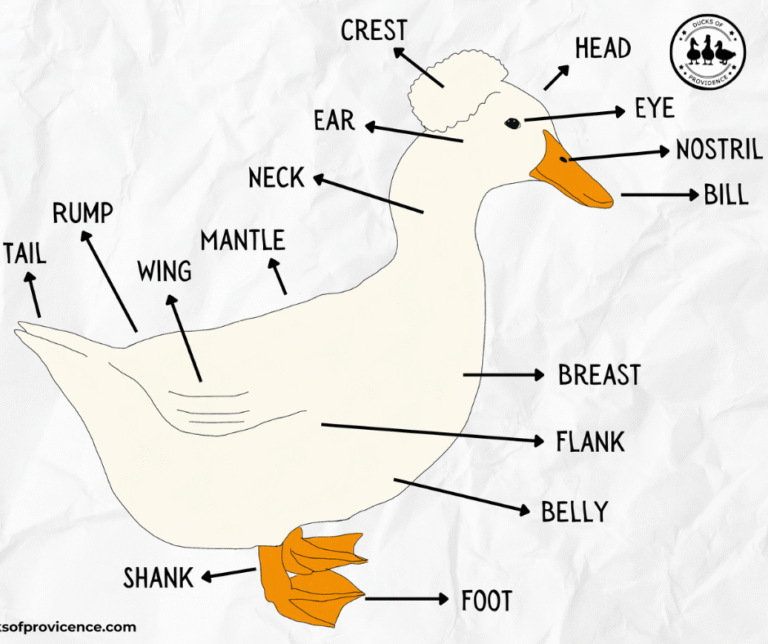
This was such an intriguing read! I had no idea ducks had such unique vision capabilities. It’s fascinating how their eyes allow them to see a wider spectrum of colors and catch movement so well. Thanks for sharing these amazing duck eye facts!
What a fascinating post! I never realized ducks had such unique vision. The fact that they can see in so many colors and even have a wider field of view is incredible. It really makes me appreciate how differently they experience the world compared to us. Thanks for sharing these interesting facts!
This post about ducks and their unique vision is fascinating! I had no idea they could see so many colors that are invisible to us. It’s incredible how their eyes are adapted to their environment. I appreciate the detailed explanations and fun facts—definitely learned something new today!
What an intriguing post! I had no idea that ducks could see ultraviolet light. It’s fascinating to learn how their vision helps them navigate and find food. Thanks for sharing these eye-opening facts!
I never knew ducks had such unique vision! It’s fascinating how their eyes are positioned for a wider field of view. I’d love to see how their color perception differs from ours. Thanks for sharing these interesting facts!
This was such an interesting read! I had no idea that ducks could see such a wide range of colors and had a different depth perception compared to humans. It really makes you think about how animals experience the world in their own unique ways. Thanks for sharing these fascinating facts!
What an eye-opening post! I had no idea ducks had such unique vision. It’s fascinating to think about how differently they perceive their surroundings. Thanks for sharing these amazing facts!
This is such a fascinating read! I had no idea ducks had such unique vision. It’s amazing to think about how they perceive their environment so differently from us. The fact that they can see ultraviolet light is mind-blowing! Thanks for sharing these interesting insights!
This was such an interesting read! I had no idea ducks had such unique vision. The fact that they can see ultraviolet light is mind-blowing! Thanks for sharing these fascinating insights!
This was such an interesting read! I never realized how differently ducks perceive their surroundings. The fact that they can see ultraviolet light is mind-blowing! It makes me wonder what else we might be missing in our own perception of the world. Thanks for sharing these fascinating facts!
This was such an eye-opening read! I had no idea ducks had such an incredible visual perspective. It’s fascinating to think about how their unique eyes allow them to see the world so differently than we do. Thanks for sharing these fun facts!
What an interesting read! I never knew ducks had such unique vision! The fact that they can see polarized light really changes how we think about their environment. It makes me appreciate these little creatures even more! Thanks for sharing these fascinating facts!